| Route Map and Depot Plan |
|---|
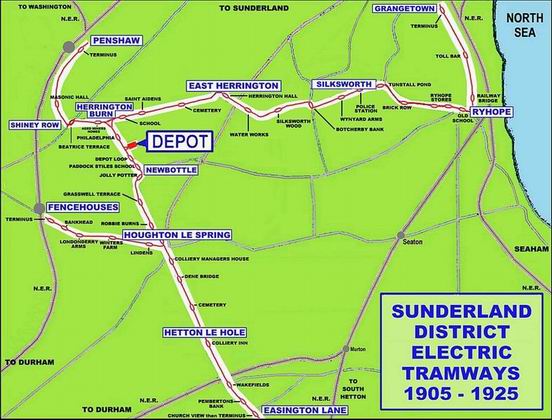
© Malcolm Fraser 2016
|
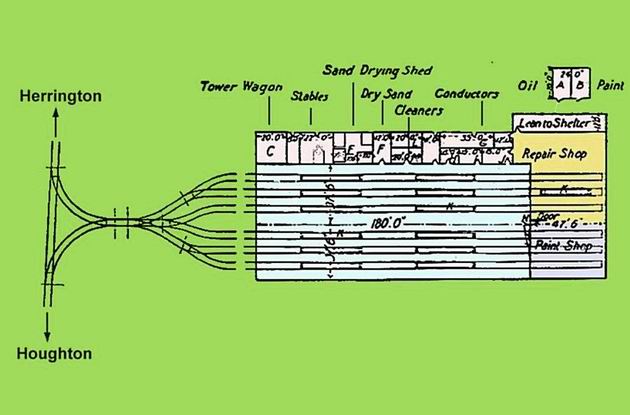
© The Light Railway and Tramway Journal, 4th August, 1905 |
| The Early Years |
|---|
Having constructed an ill-conceived system with a hopeless power supply, oddball and badly built trams and insufficient customers, the engineers who designed the system gave up the business of building tramways within five years.
The tramway had Houghton-le-Spring as its axis and served the colliery villages south of Sunderland, with branches to Easington Lane, Fencehouses and Penshaw. The main line to Sunderland went the long way round to meet the Corporation system at Grangetown but there was no through-running into the town until it was too late.
The lines were all single-track with passing loops and were laid through an area which didn t provide a sufficiently large customer base from which to make a profit. The tram depot, which was always known as The Car Sheds , was next to the Dorothea Pit at Philadelphia, north of Houghton-le-Spring. It was built next to the colliery because the company needed coal to make gas to drive the engines of its power station. This was meant to supply enough power to run thirty trams.
Unfortunately, they found that their power station was only capable of supplying one third of the fleet. After unsuccessfully trying to buy power from Sunderland Corporation, they were saved when the Durham Collieries Power Company opened a better power station next door in 1906. That building still exists, as do the houses built for the workers at Electric Crescent, Voltage Terrace and Tesla Street.
| The Trams |
|---|
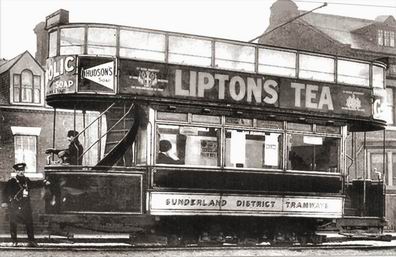
|
Trams No's 1 to 15 were English and built by the Brush Company at Loughborough. Although open-top trams had been the fashion five years earlier, they had not proved popular with the public and most operators were fitting covered upper decks by 1905. This batch of Brush cars did not follow the trend and were very unusual. They had high glass screens around the top deck but no roof, so the passengers had some protection from wind but none from rain. This could only be regarded as a mistake. |
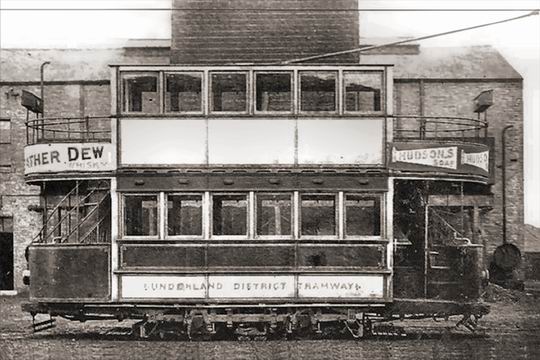
|
Trams No's 16 to 30 were French and constructed by Arbel, builders of railway rolling stock and eventually suppliers of the vehicle transporters for the Channel Tunnel. These trams had short enclosed saloons on the upper deck with open balconies at the ends. They had rather an odd look, having six full drop windows on both decks. This prevented much in the way of internal bracing of the bodies, which began falling apart after only three years and they were all scrapped by 1913. |
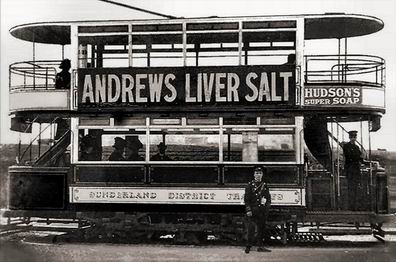
|
Three standard Brush balcony cars, No's 32 to 34, were obtained in 1908 and after the company had given up on the French cars sixteen more arrived to replace them in 1913. The last batch of eight Brush cars arrived in 1920. Four of them displaced 1905 cars and the rest were numbered No's 35 to 38. These three photographs were supplied by Malcolm Fraser. |

|
There was also one works car, this was a track sweeper / snow broom, built by Brecknell, Munro and Rogers of Bristol and supplied in 1906 and completely open to the elements. It was later provided with home built shed-like driving cabs to give some weather protection for the crew. This photograph is the only one known and was supplied by John Carlson. |
| The Later Years |
|---|
From 1921 there was a through-running agreement with Sunderland and the District cars ran down into the town but by 1924 the company was ready to throw in the towel and become a bus operator. The tramway was abandoned in stages over the next twelve months.
The newer cars went to Bolton and Grimsby and the rest were scrapped but that was not the end for number 33. This 1908 tram had overturned in Newbottle on 7th September 1921 and then became a single deck parcels car. After the closure the saloon went to Sunderland Corporation to be incorporated into a new tram, number 84, and it ran for another twenty-seven years.
Sunderland District Electric Tramways became Sunderland District Transport in 1925, then Sunderland District Omnibuses . It became part of the Northern General Transport group from 1930 and still survives today as part of the Go North East Bus Group.
© Malcolm Fraser & Gordon Bulmer 2021